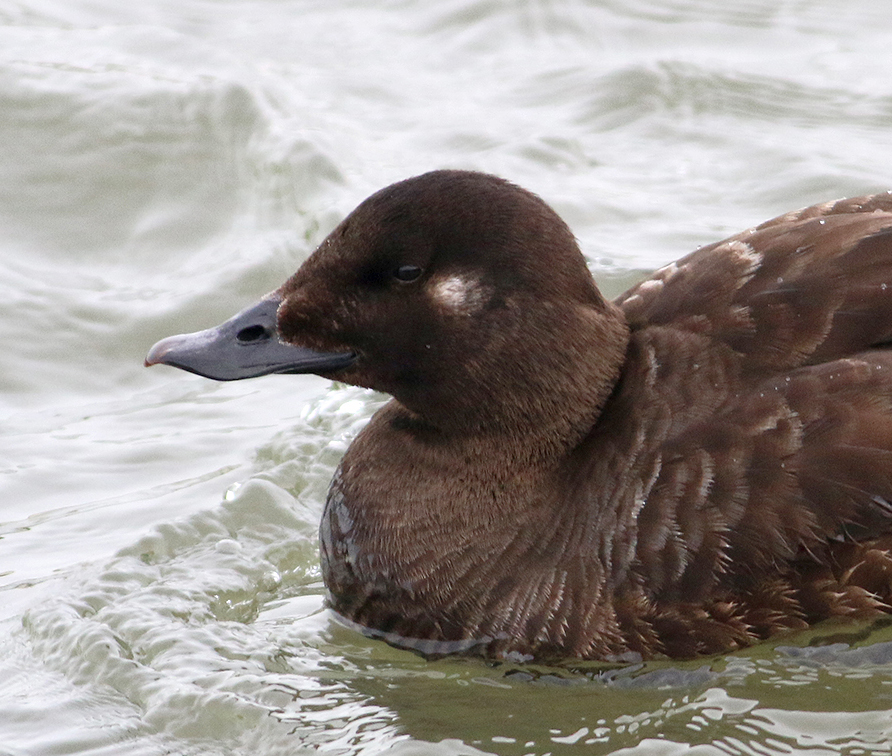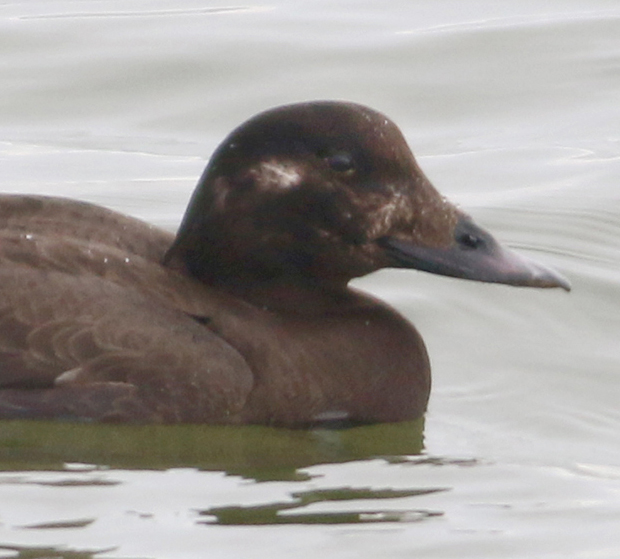OK, so today I want to comment on the identification of scoters. I know what some of you are thinking: “Really? Scoters? Aren’t they easy-peasy?” After all, they are relatively common ducks of our eastern seaboard, there are only three scoter species, and the males have obvious markings. I agree; the males are distinguishable and easily identified.
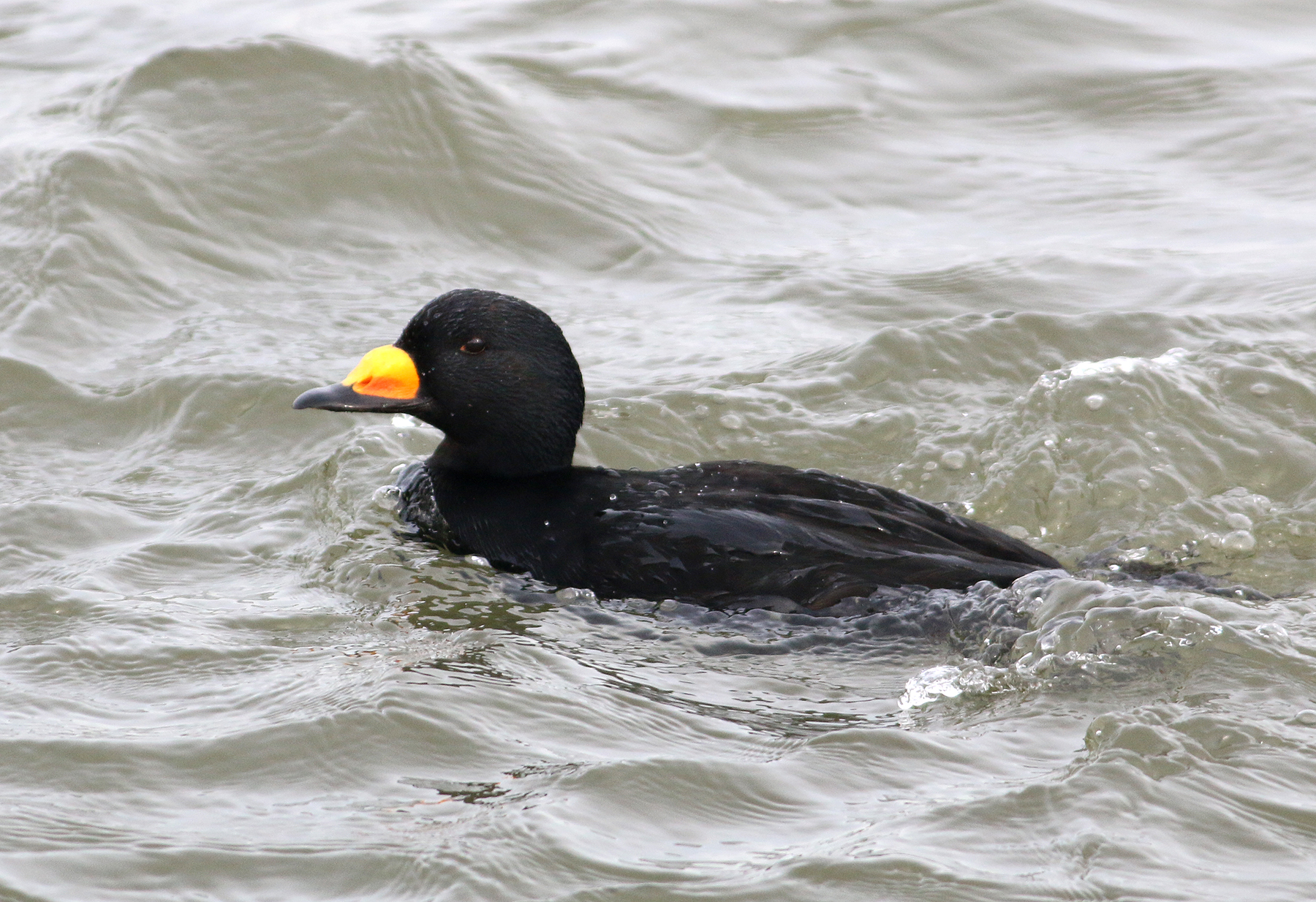
Male Black Scoters are all-black except for the large bright yellow-orange knob on their bill. They are perhaps the most common of our three scoters.
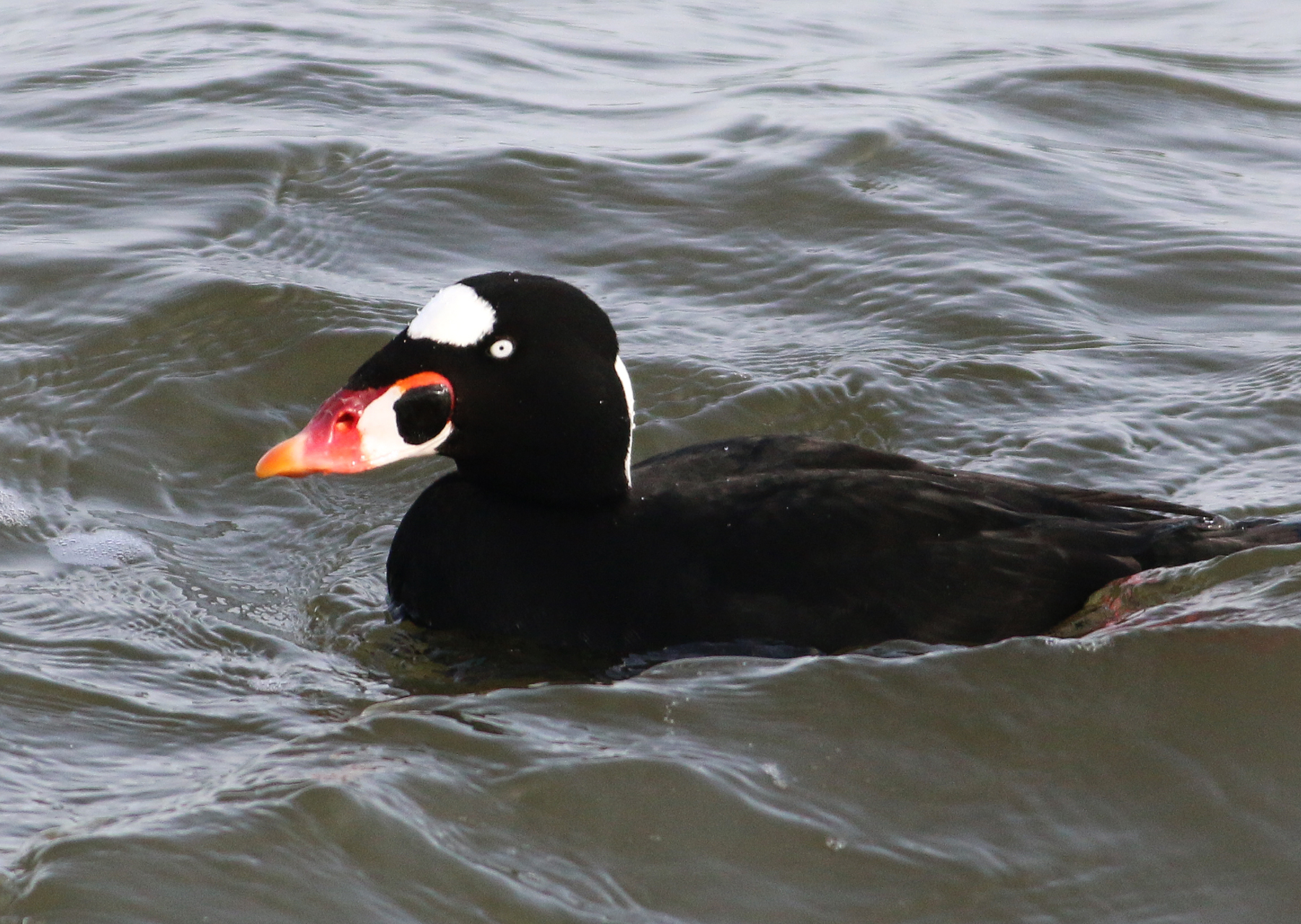
Male Surf Scoters are unmistakable whether they are facing you or facing away, with their multicolored bill and large white rectangular patch on the back of the neck.
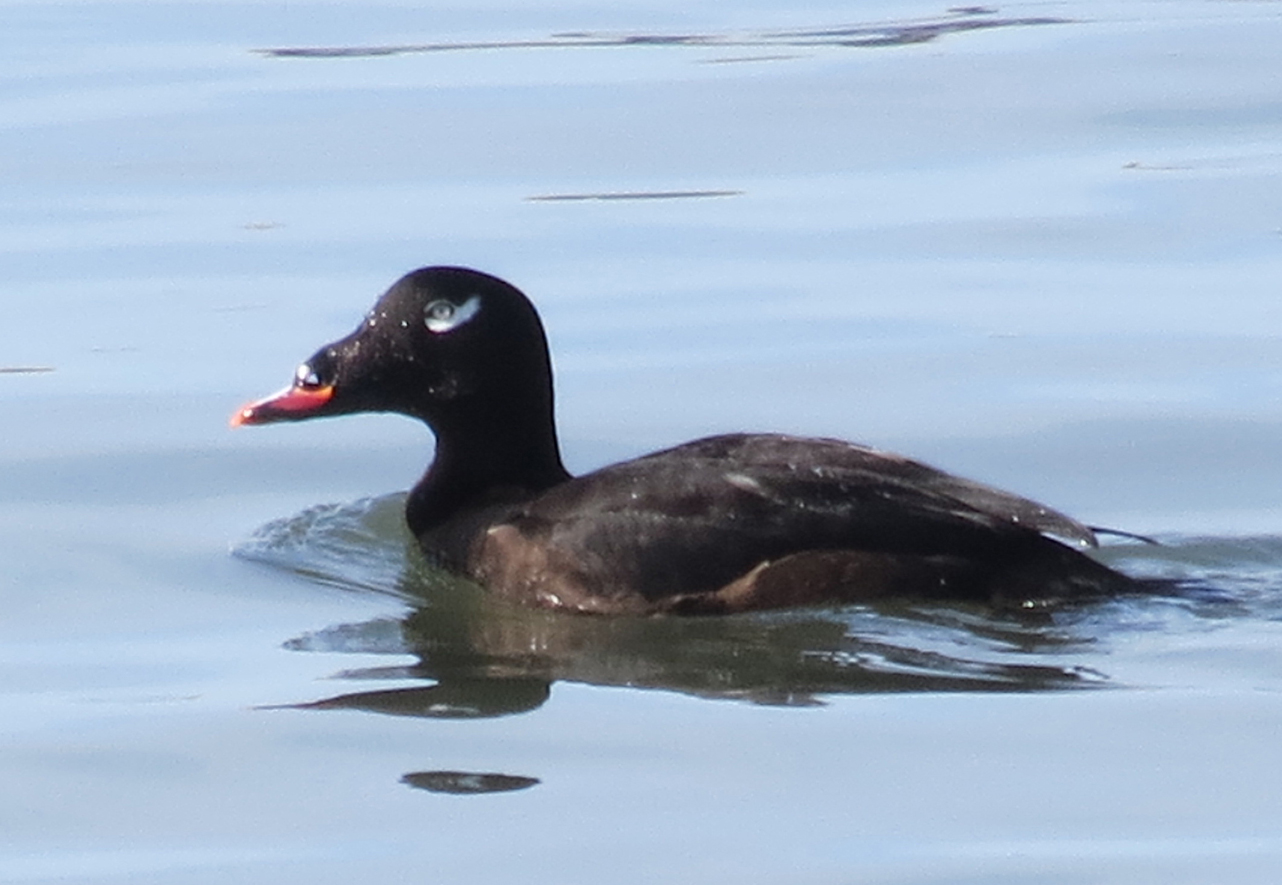
Here’s a male White-winged Scoter, with the distinctive white ‘comma’ near its eye. They are the least common of our scoters, and are slightly larger than the other two species.
So as we see, the adult males are indeed simple to distinguish from each other. But for me the identification becomes more challenging when we consider female and immature scoters. Since they constitute more than half of the population, we shouldn’t simply ignore them. For example, can you identify these two birds with certainty? Can we determine their gender or age? If not, then read on.
With regard to the female/immature scoters, Black Scoter is easiest. To me its facial pattern is very reminiscent of a non-breeding or female Ruddy Duck (a bird that might be more familiar to most of us), with the dark cap and contrasting light cheek, which as we soon will see, is very different from the other two scoters. Here is a nice example, followed by a female Ruddy Duck for comparison.
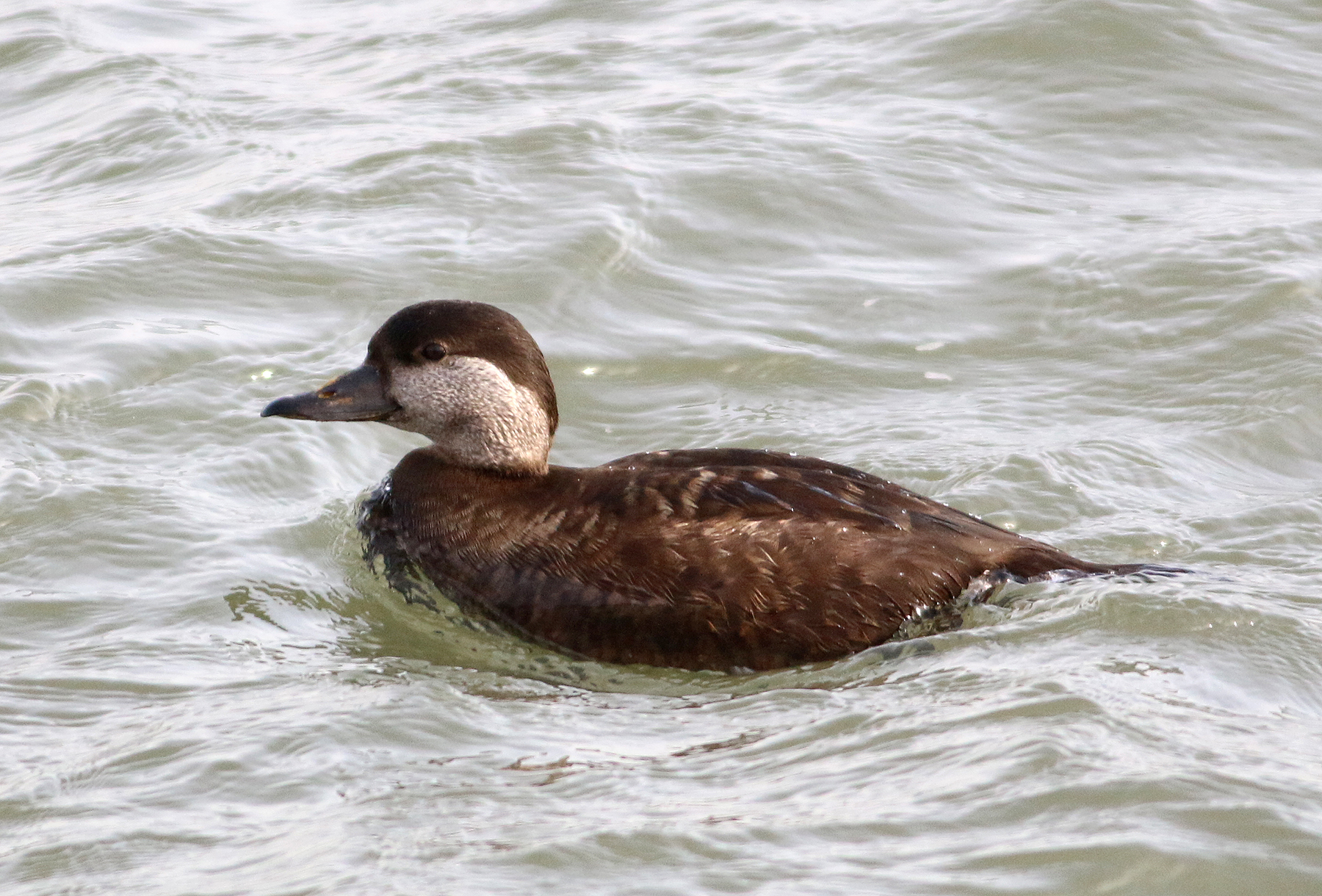
This is a female Black Scoter, with a dark cap and contrasting lower cheek. Compare it with the Ruddy Duck shown below.
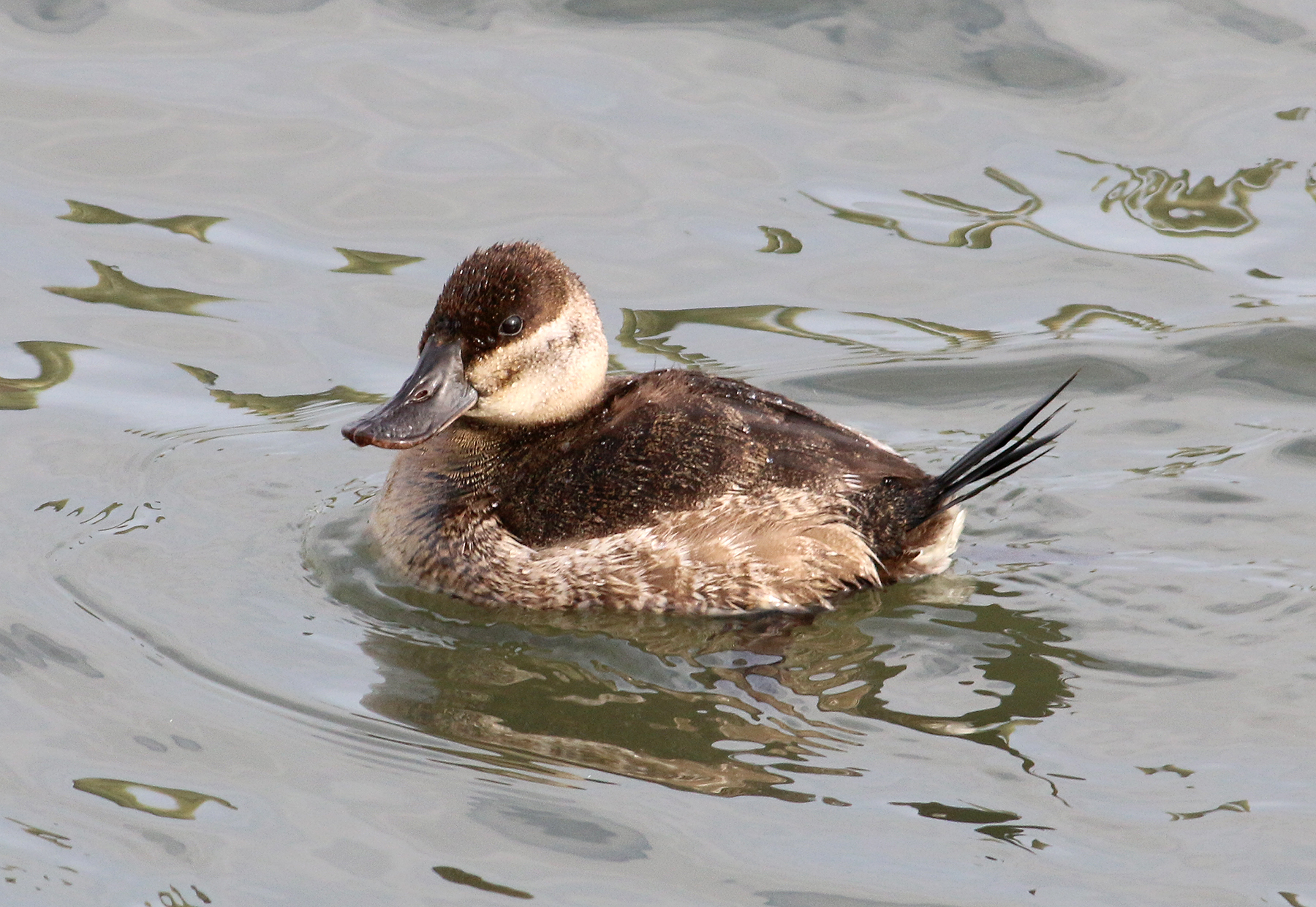
This is a Ruddy Duck. It has a similar facial pattern as the female Black Scoter, but is much smaller, with a different bill shape, and usually has its tail held in an upright position as we see here.
For me the major scoter problem was distinguishing female and immature Surf Scoters from White-winged Scoters. I used to focus on the pattern of the white spots on the face. After all, Sibley has arrows pointing out that the front spot on White-winged Scoter face is more oval, while for Surf Scoter is is vertical. In reality, I would cheat and hope that some white wing feathers were peeking out to make the decision easy. But the problem with looking strictly at the facial pattern is that the spot was often roundish or dispersed, so I couldn’t figure out if it was more oval or vertical, and sometimes there was no obvious spot near the bill. Here’s one example.
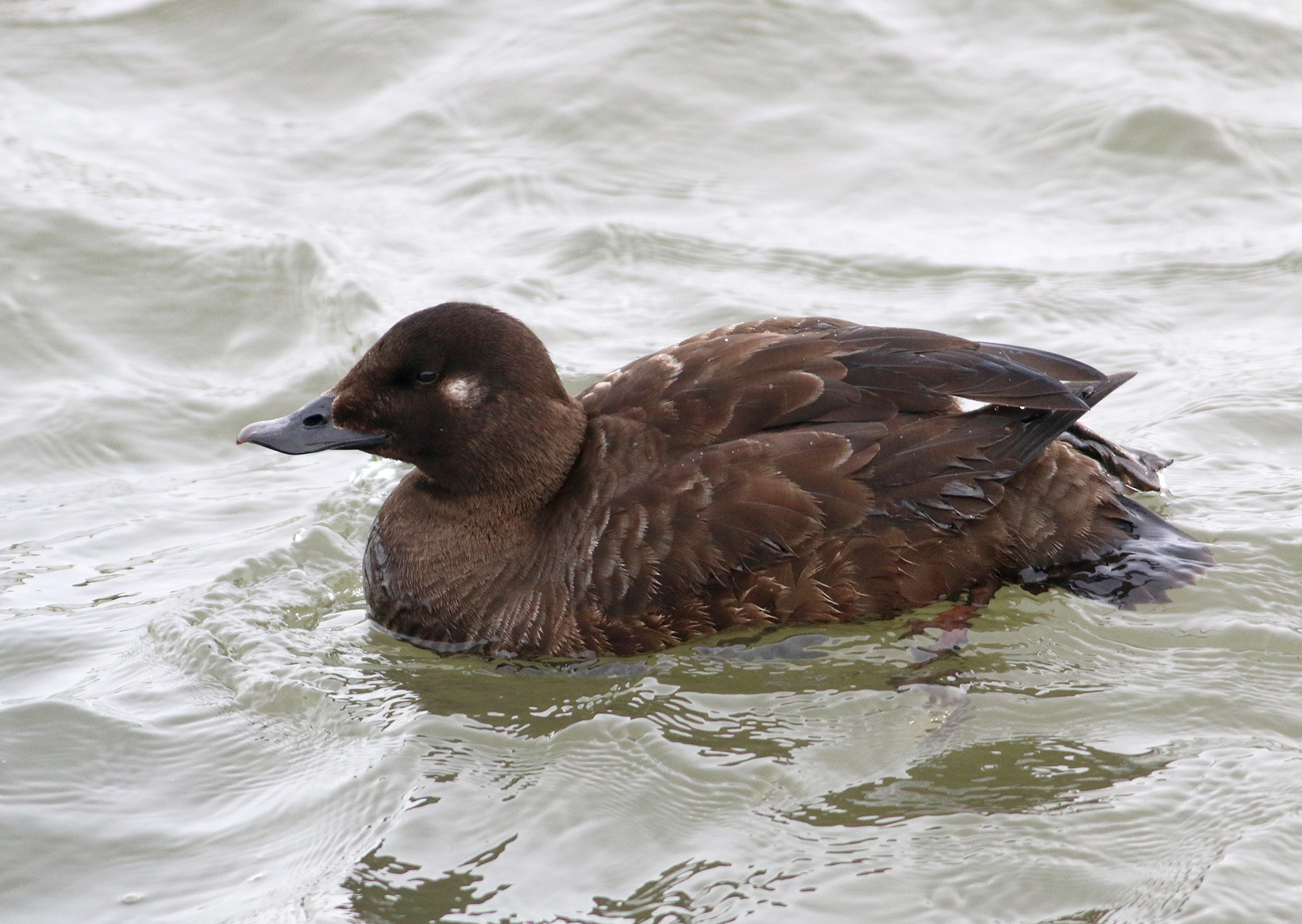
Here’s a female-type scoter with a single white spot on its face, despite the fact that the field guides depict two white patches on the face of both Surf and White-winged Scoters. So how can we evaluate it?
After struggling with this problem I went back once again to my big Sibley, and then something happened that happens often with that book…I found more information in there that I had not really paid attention to. It was this panel.
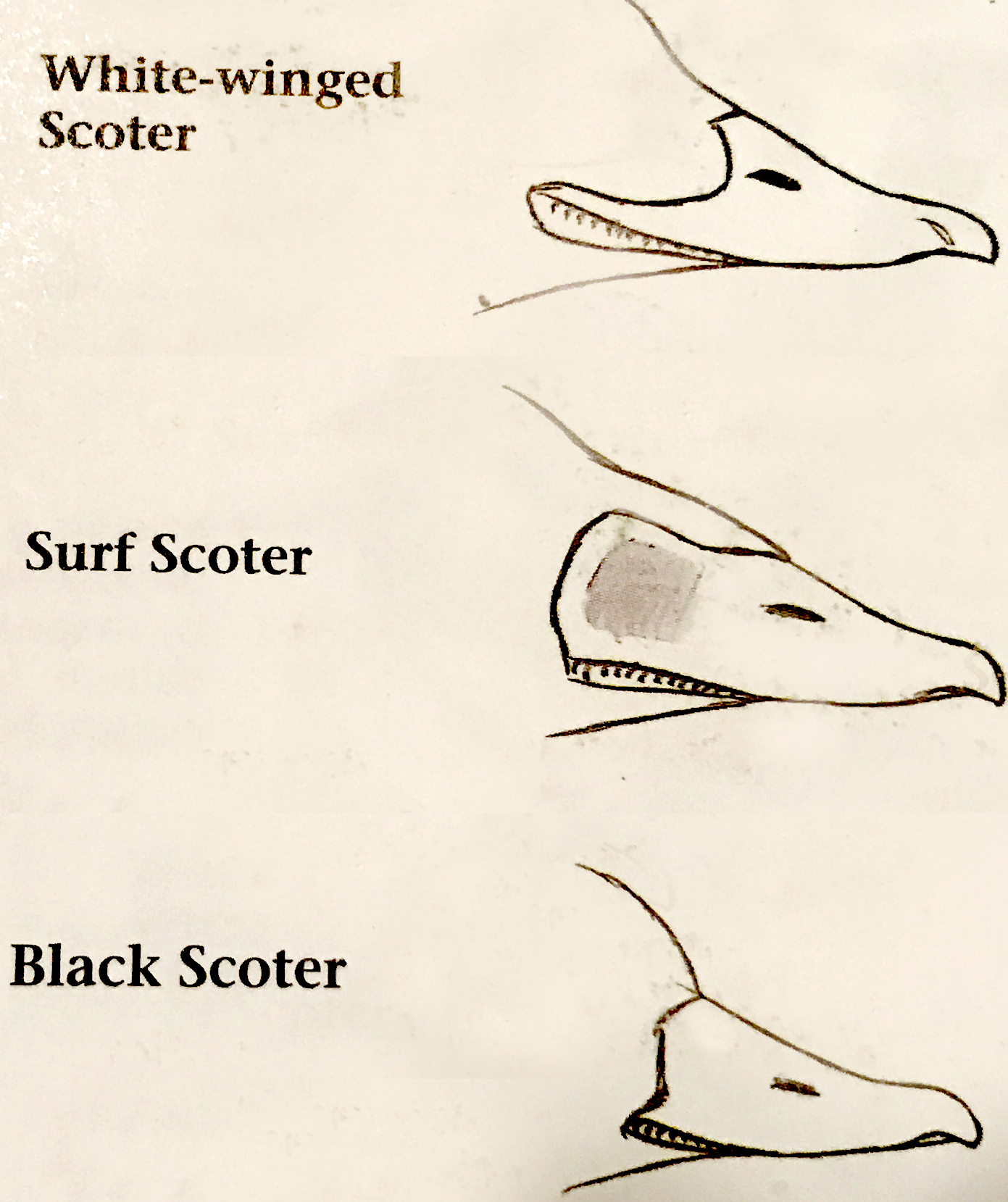
The bill shape of Surf and Black Scoters appears quite similar to me, with the exception of the ‘overhang’ of feathers on the upper base of the Surf Scoter bill. This similar shape is not a problem, because those two species are easily distinguished by plumage features, even from a distance. The point that I hadn’t noted previously is that the bill shape of Surf and White-winged Scoters are very different, so we don’t have to examine the facial spots or hope for the white wing patch to be exposed. White-winged Scoter’s bill has a smile-like appearance to it, being highly curved where it meets the feathers, with the lower ‘lip’ extending far back into the face. Surf Scoter is more triangular overall, with a somewhat vertical angle near the cheek. So if we get a good look at the bill shape (which admittedly is not always possible if they are distant), the identification becomes simple and definitive. Look for this feature when you have a mixed flock of scoters and test yourself with the birds shown below.
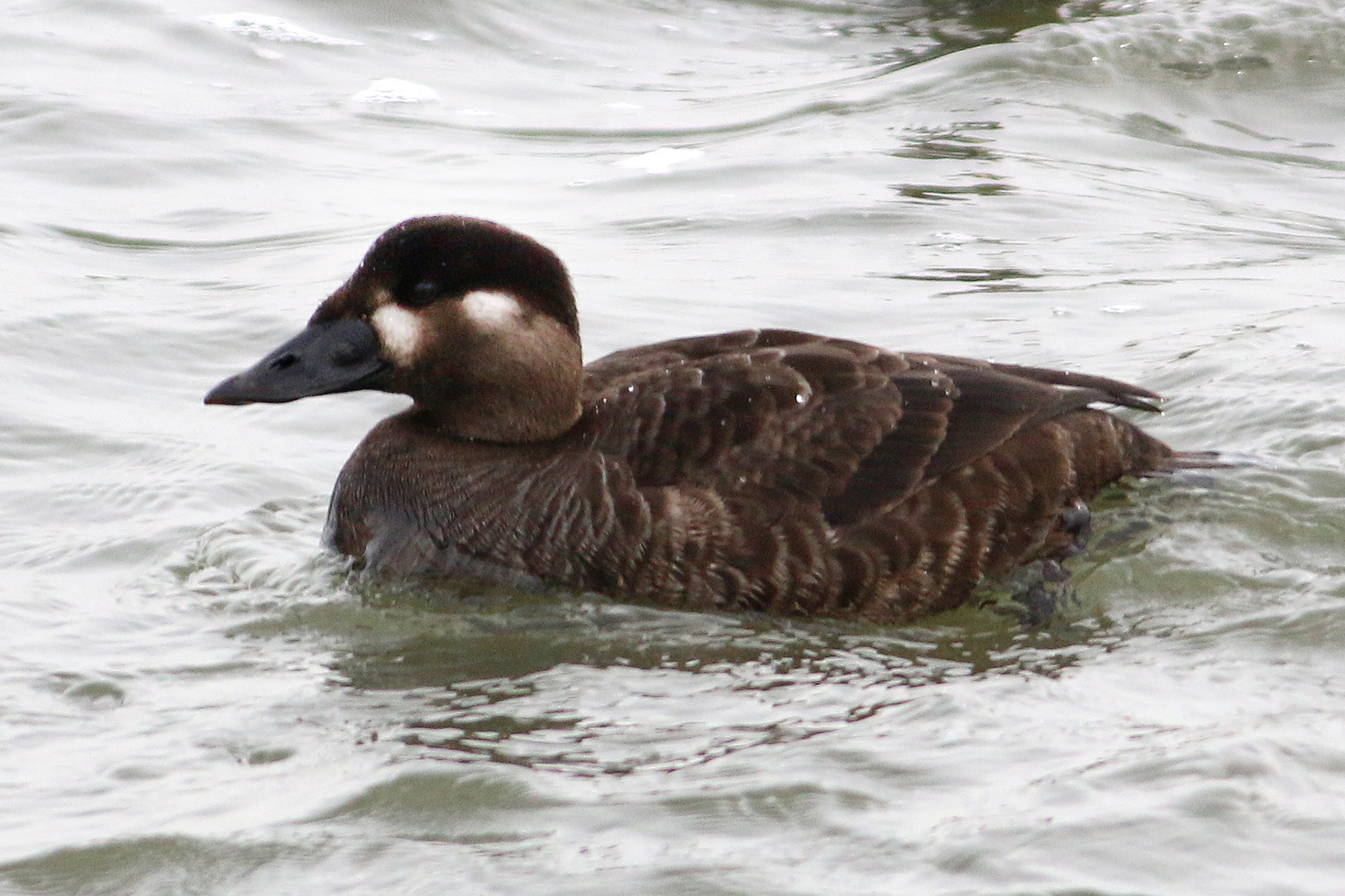
This is a ‘classic’ female Surf Scoter, with the two strong white facial spots, including the forward spot being located directly behind a vertical bill surface.

This is the full-body photo of one of our two original quiz birds from above, with a single facial spot. The strongly curved or ‘smiling’ surface of the bill where it meets the feathers indicates that this is a White-winged Scoter.
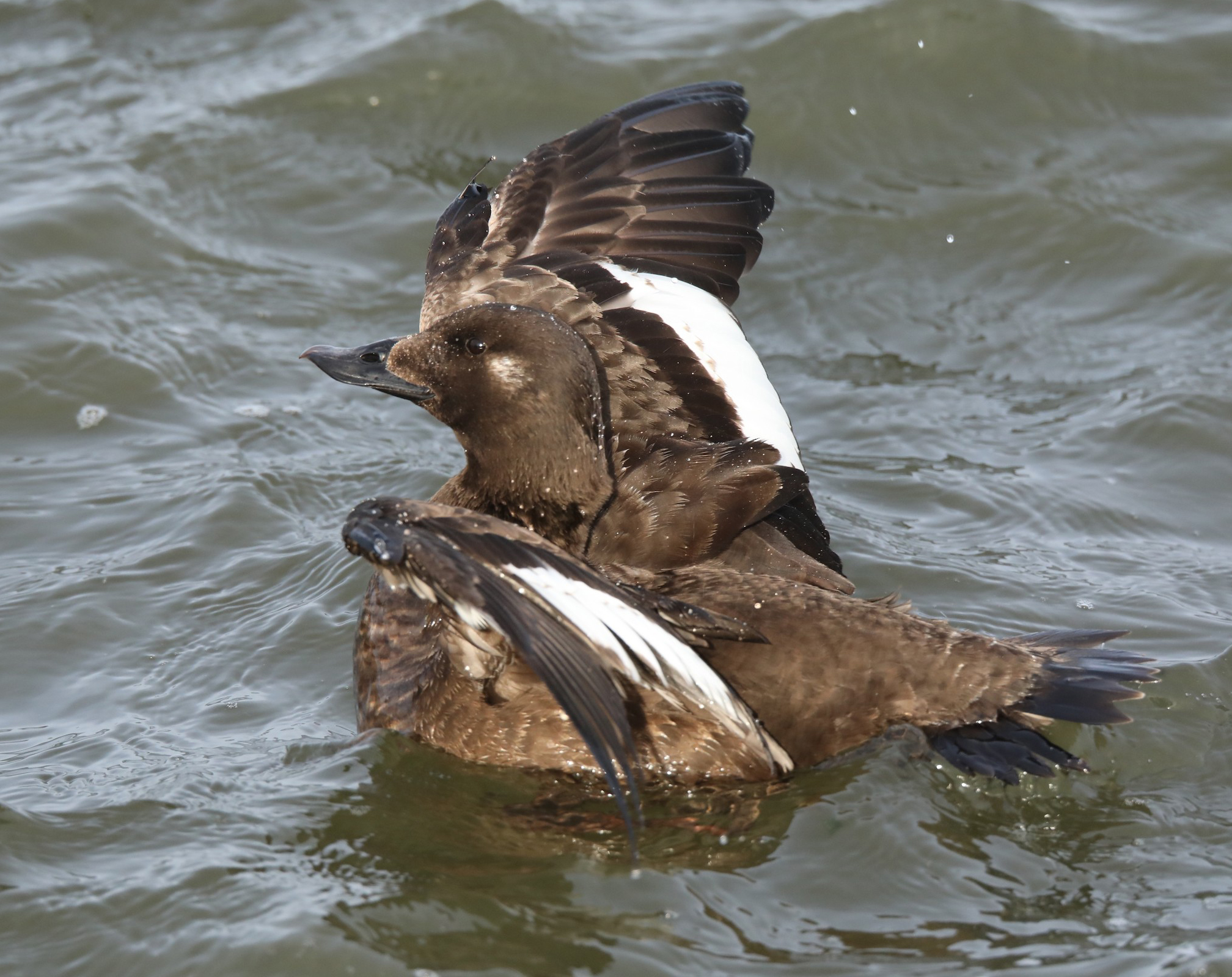
Here’s that same bird with its wings open, confirming that it is indeed a White-winged Scoter. Photo contributed by Billy Leiter.
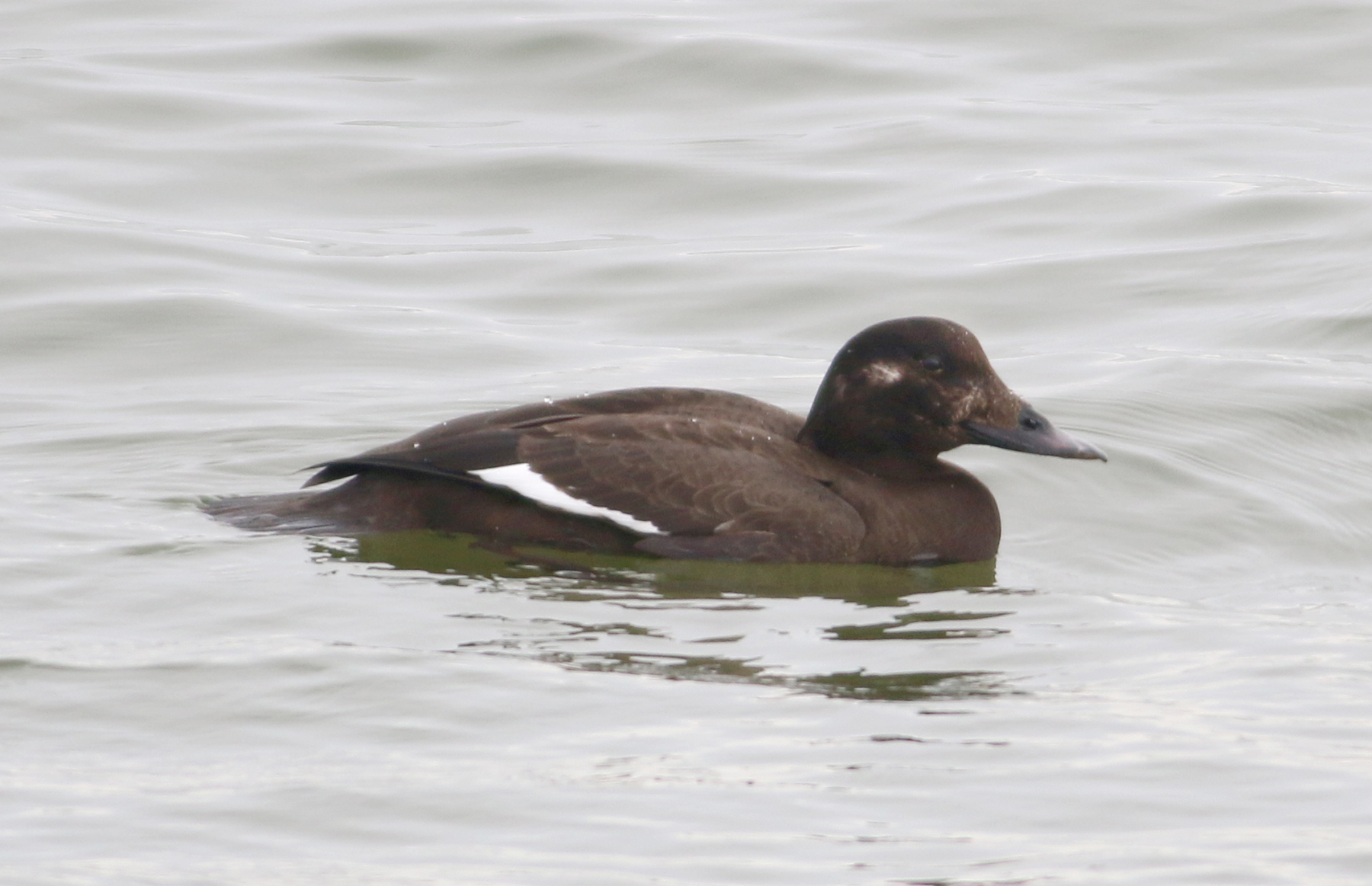
This is a full-body shot of our second quiz bird from above. The white wing patch clearly identifies this brown bird as a White-winged Scoter, even from a distance. If that white wing patch wasn’t visible (as often happens), and we relied on evaluating the facial spots, we might be stumped because the forward spot is weak and somewhat vertical. But the ‘smiling’ curved bill shape would be sufficient to identify this bird. (click to enlarge the photo).
The lesson once again is that as often happens when struggling with bird identification, structure (which is consistent) trumps plumage (which is variable).
